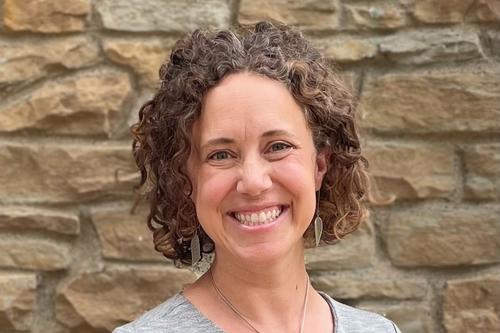
Minnesota’s rural communities are home to over 1,243,226 residents. To mark National Rural Health Day on Thursday, November 18, 2021, Carrie Henning-Smith, an associate professor in the School of Public Health who specializes in health and healthcare in rural communities, speaks about the unique challenges and opportunities related to addressing rural health and well-being.
Q: What barriers to accessing healthcare do rural communities face?
Prof. Henning-Smith: Rural residents have a variety of challenges to accessing care. In general, they have access to fewer providers, especially specialists, and they have longer travel distances to get to health care. Rural health care workforce shortages are pervasive, and have gotten worse during the COVID-19 pandemic. Research from the University of North Carolina shows that 138 rural hospitals have closed since 2010. Rural pharmacies and nursing homes have also been closing at faster rates than urban ones, and research from our own University of Minnesota Rural Health Research Center shows a decline in obstetric care for rural residents. In other words, from birth through old age, and everything in between, rural residents face increasing challenges in accessing the health care they need.
Q: What aspects of living in a rural community impact overall quality of life?
Prof. Henning-Smith: Rural areas can offer a wonderful quality of life. They are rich in natural resources and amenities and tend to have strong social capital. However, rural areas also tend to have fewer occupational and educational opportunities, more limited technological connectivity, older housing stock, and long-standing transportation challenges. With investment in rural infrastructure and opportunity, many rural areas are thriving. However, that investment is not equal across places. It’s also important to note that rural areas are not monolithic – rural people and places are tremendously diverse. In our research, we tend to find the poorest health outcomes for rural residents who are Black, Indigenous, and people of color.
Q: How does environment, from immediate living environment to broader geographical environment, impact long-term health outcomes?
Prof. Henning-Smith: Our environment, including who we live with, the type of housing we live in, and what our community is like, has an enormous impact on our health and well-being. Our environment shapes a lot of the ways that we go about our daily life, including who we interact with, what we are exposed to, and what we have access to. For example, does your home, work, or neighborhood environment provide regular opportunities for meaningful social interaction or physical activity? If it doesn’t, do you have the resources to access what you need outside of your home and community to stay healthy, such as transportation and technology? All of these issues impact our short and long-term health outcomes.
Q: How has the COVID-19 pandemic affected residents of rural communities?
Prof. Henning-Smith: The COVID-19 pandemic has been devastating to many rural communities. Rural residents had more risk factors for COVID-19 headed into the pandemic, including an older age structure, more underlying health conditions, and more limited access to health care. Rural areas have had higher mortality rates from COVID-19 for much of the pandemic, with death rates nearly twice those in urban areas since late September of this year. COVID-19 has also stretched the rural health care workforce to its limits, with dire workforce shortages in many areas. On the flip side, the pandemic has opened up opportunities for remote work and has caused many people to re-think where they live, with some people opting to leave urban areas to live and work in rural areas. It is too soon to say what the lasting impact of all of this will be, but it will be interesting and important to watch in the coming years.
Q: What are you doing to advance health in rural communities?
Prof. Henning-Smith: My research focuses on aging, mental health, and social connectedness in rural communities. Right now, I’m focused on identifying risk factors for social isolation and loneliness among rural residents and on strategies to increase social connectedness in rural places. I’m also working with colleagues at the University of Minnesota Rural Health Research Center on research focused on supporting aging in place in rural areas, as well as on research examining inequities in health and health care access for rural residents who are lesbian, gay, bisexual, and/or transgender. In all of my research, I aim to advance health equity across geographic lines and to build on strengths and assets that abound in rural places.
Carrie Henning-Smith is Deputy Director of the University of Minnesota Rural Health Research Center and an Associate Professor in the Division of Health Policy and Management, University of Minnesota School of Public Health. Her research focuses on social determinants of health, access to care, and aging and long-term care.
###
About the University of Minnesota School of Public Health
The University of Minnesota School of Public Health improves the health and wellbeing of populations and communities around the world by bringing innovative research, learning, and concrete actions to today’s biggest health challenges. We prepare some of the most influential leaders in the field, and partner with health departments, communities, and policymakers to advance health equity for all. Learn more at sph.umn.edu.
About “Talking…with U of M”
“Talking…with U of M” is a resource whereby University of Minnesota faculty answer questions on current and other topics of general interest. Feel free to republish this content. If you would like to schedule an interview with the faculty member or have topics you’d like the University of Minnesota to explore for future “Talking…with U of M,” please contact University Public Relations at unews@umn.edu.








